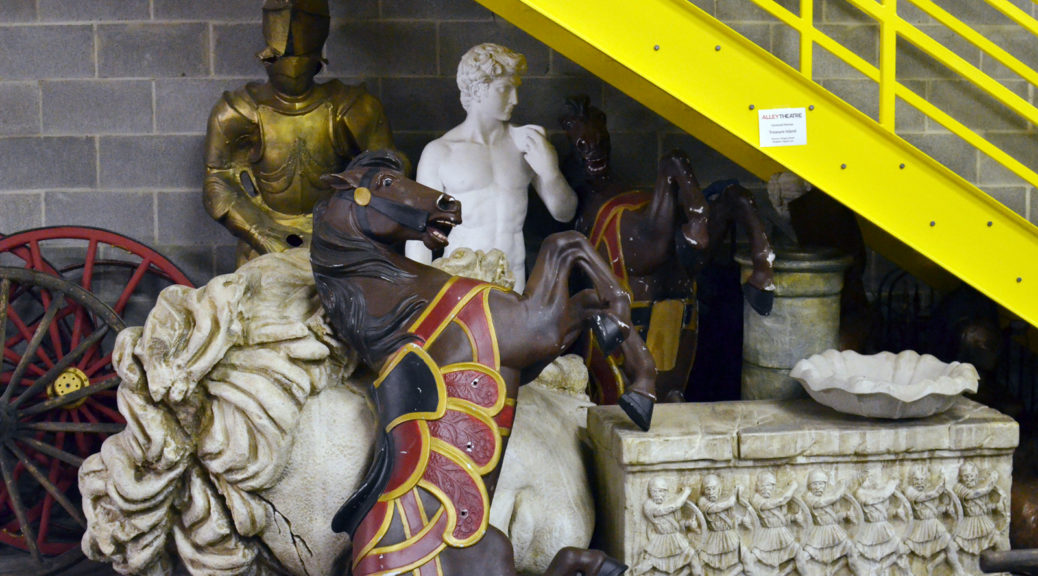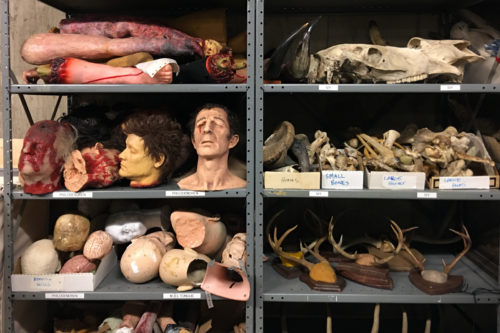The following first appeared in a 1916 book titled “Recollections of a Scene Painterâ€,  written by an E.T. Harvey. This post is for all the grumpy carpenters and TDs in our lives:
The manager of a traveling theatrical company going to play “Black Eyed Susan” in a small town, inquired if they had a ship’s deck scene in the theatre, and upon being told “no,” said: “Well we’ll have to hang William again in a bloody wood.” In the old days an experience like this was often likely to occur when the traveling company playing outside the big cities had to depend entirely upon the local theatre for scenery, and anything out of the ordinary was called for. But all the well-appointed theatres carried a large amount of what was called stock, from the “Blast Heath” in “Macbeth,” to the “Palace of the Capulets,” in “Romeo and Juliet.”
The stage floor was also arranged for the special traps. There was the cauldron and apparition trap in the centre of the stage, for the witch scene in “Macbeth.” A trap a little to the right of centre, and further down the stage was the grave digger’s trap for “Hamlet.” A long trap clear across the stage at the back, arranged on an inclined plane, was the ghost trap in the “Corsican Brothers.” Besides these, were the small square star and vampire traps, each side of the stage down in front; the Star trap where the demons would be propelled from below and thrown up in the air above, the points of the star falling back in their position. The Vampire trap is where he would double, and disappear again below.
All the scenery in those days was on “Flats” (sliding frames that met and parted in the centre). Very few of the theatres had height sufficient to take up the scenery as is now done.
Most of the theatres had what was called a scene dock, where the scenery was kept; this was usually off to one side of the stage. In the old historical theatres scarce any one knew what was in the stage pack but the old “Stage Carpenter”—he was the one fixture of the house. “Actors might come and actors might go, but he went on forever.” Like many other theatrical terms that have become universal, he was the original Crank. It was natural for him to become an autocrat, and even Stars would hesitate to incur his displeasure.
One time Louis James was playing “Julius Caesar” at the Boston Theatre. At rehearsal a substitute scene was run on for the garden of Brutus. James said: “Prescott, what are you going to give me for this scene?” The old carpenter said: “I know what you want, it will be alright; but it is way back in the pack.” The scenery at the Boston Theatre was almost as complete as the Boston Library, but it was too much trouble for Prescott to go through the pack, so he took the first garden scene that came handy, and Brutus was horrified at night to see a lawn mower and sprinkling-can a conspicuous feature in his garden. It was the first scene that came handy.
Original Publication: Harvey, E. T. Recollections of a Scene Painter. Cincinnati: W.A. Sorin, 1916. 40-41. Google Books, 15 Feb. 2008. Web. 5 Sept. 2012.




